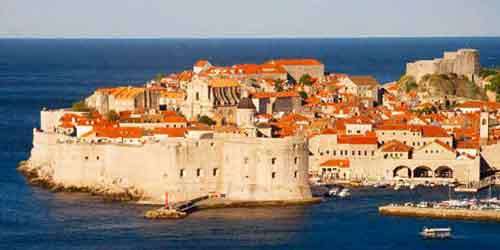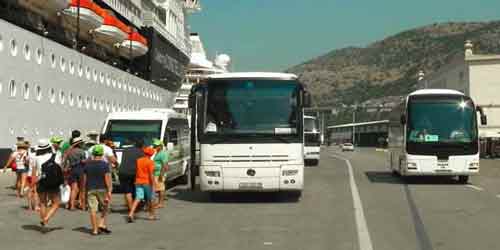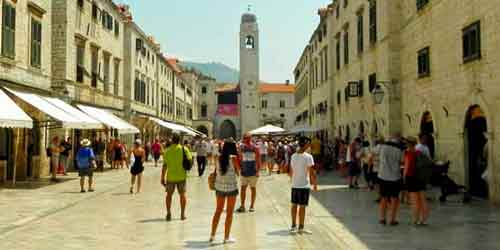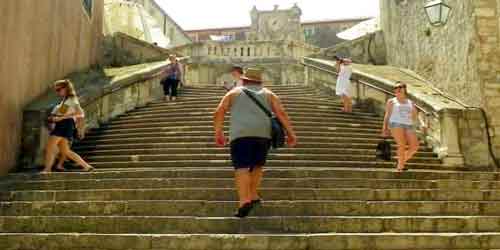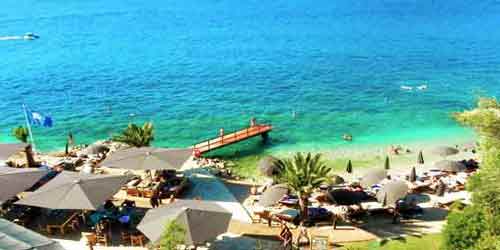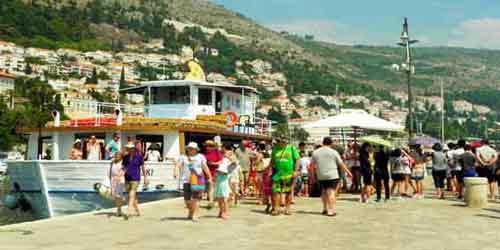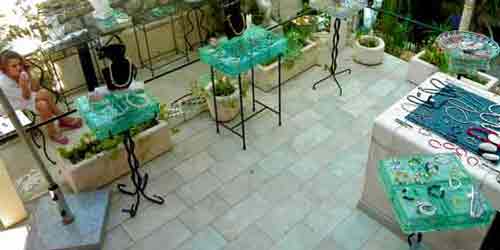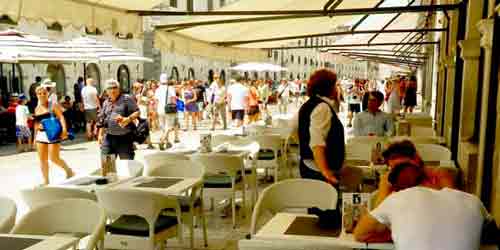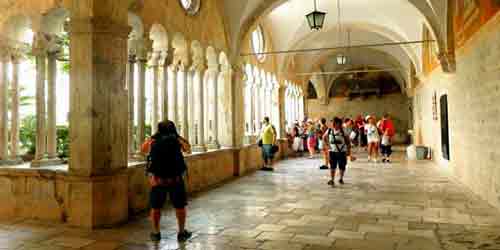Discover fascinating facts about Dubrovnik when visiting the city on a cruise calling at the port of Dubrovnik, including a brief history, timeline, trivial curiosities, geography, and demographics.
Dubrovnik or the 'Pearl of the Adriatic', as it is know, has been one of the most important ports in the Mediterranean since the 13th century.
Contents
Seriously damaged by the earthquake of 1667 and also by armed conflict in the 1990's, its history is preserved within fortified walls. Hence being a UNESCO World Heritage site since 1979.
Brief History
Dubrovnik first started as a small settlement back in prehistoric times, which was actually on a small island later named Laus (Latin lausa = rock). But the city was only founded around 614 as Ragusa when Slavs and Avars invaded the surrounding area and a number of roman refugees from Epidaurum flocked to this 'rock'.
Soon after, a number of Slavs established their settlement in the mountainous area on the coast, calling it Dubrovnik ('dubrava' means oak woods or grove in Croatian). After the fall of Rome, Ragusa was ruled by the Byzantine Empire until 1205.
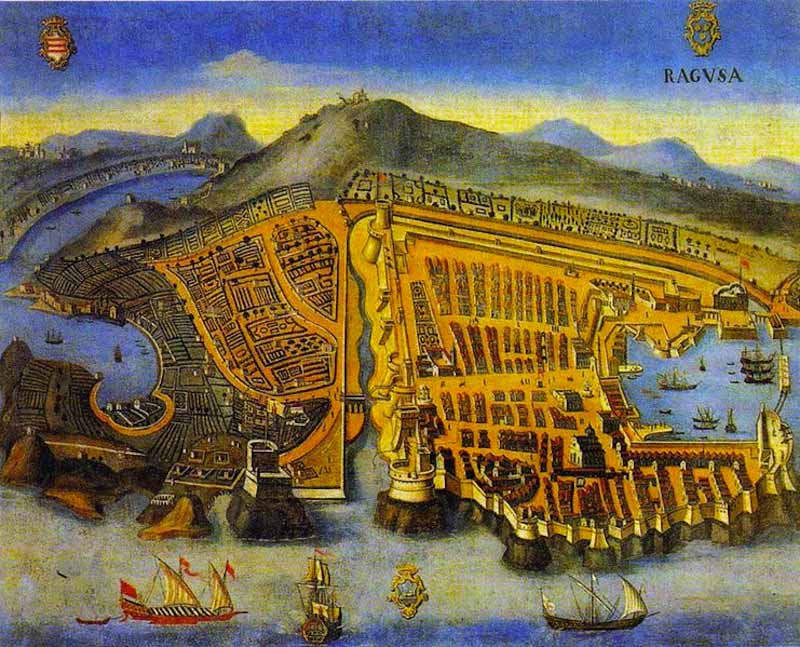
Painting of Dubrovnik in 1667
Public Domain
By the 12th century, the marshlands that separated the island filled in, both settlements were united and the whole area became what now is Dubrovnik. However, Ragusa was the official name of the city until 1918.
Over the years Dubrovnik grew in size, reputation, and mercantile power, and during the 12th and 13th century came under attack by Venice - although ruled by this Italian Maritime Republic, the city-state retain most of its independence in all but name. The “Old Town” that you see today is virtually the same as it was in the 13th century.
Maneuvering very diplomatically between the powers in the Mediterranean, the city signed a treaty with the Ottoman Empire establishing a very successful trading role between East and West. In 1667, the city was severely damaged by a devastating earthquake, but the walls remained.
Subjugated by the armies of Napoleon Bonaparte, it was 'liberated' by the British and Austrian troops in 1814 only to became part of the Austro-Hungarian Empire, in 1815, after the Congress of Vienna.
During the second world war Dubrovnik became part of the pro-Nazi Independent State of Croatia. Initially occupied by Italians, it changed hands when the Germans took over in 1943 and again when it become part of Communist Yugoslavia after the end of the Second World War.
At the end of 1991, Dubrovnik came under attack by the Serbian JNA (Yugoslav People's Army) which lasted seven months and did a great deal of damage to the city - it can still be seen today. Artillery rounds destroyed over 50% of the buildings and killed over 100 people within the city walls.
It took until 2005 for repairs and restoration to be finished, and the town returned to its original and wonderful beauty.
Time Line
614 AD - City is founded; under the protection of the Byzantine Empire.
1205 - 1358 - Under Venice rule.
August 16, 1296 - Fire destroyed part of the city, new urban plan developed.
1301 - Medical service introduced.
1317 - First pharmacy opened, still operating to this day.
1358 - Peace Treaty of Zadar. Relative independence as a vassal-state of the Hungarian-Croatian Kingdom. Named Republic of Ragusa until 1808.
1377 - First quarantine hospital (Lazarete) established.
1432 - First orphanage opened.
1438 - Construction of a 20 km (12 mi) water supply system.
1440 to 1804 - Free state, paying vassal annual tribute to the Ottoman Empire.
1418 - Slave trading abolished.
1544 - Jews from Portugal arrive.
April 1667 - Earthquake killed over 5,000 citizens.
1808 - Surrender to the Napoleonic army.
1814 - Liberation of Napoleonic Rule by British and Austrian troops.
1815 - Congress of Vienna, established the Kingdom of Dalmatia under the rule of the Hapsburg Empire.
1918 - After the fall of the Austria–Hungary Empire, the city is incorporated into the new Kingdom of Serbs, Croats, and Slovenes (later the Kingdom of Yugoslavia).
1929 - Yugoslavia divided among 9 'Banovina'; the city became part of the Zeta Banovina.
1939 - Dubrovnik became part of the newly created Banovina of Croatia.
1939 - 1944 - City became part of the Nazi-puppet Independent State of Croatia.
1944 - City is occupied by Tito's partisans (Communist); later part of the Socialist Republic of Croatia and the Socialist Federal Republic of Yugoslavia.
1979 - Dubrovnik joined the UNESCO list of World Heritage Sites.
25 June 1991 - Croatia declares independence. Socialist Republic of Croatia was renamed Republic of Croatia.
On October 1, 1991 - Dubrovnik under siege by JNA (Yugoslav People's Army).
May 1992 - Croatian Army lifted the siege and liberated Dubrovnik's surroundings by the end of October.
1 July 2013 - Croatia becomes part of the European Union.
Trivial Curiosities
Marco Polo - The Venetian merchant and adventurer was allegedly born in the Korčula, the island in the surroundings of Dubrovnik.
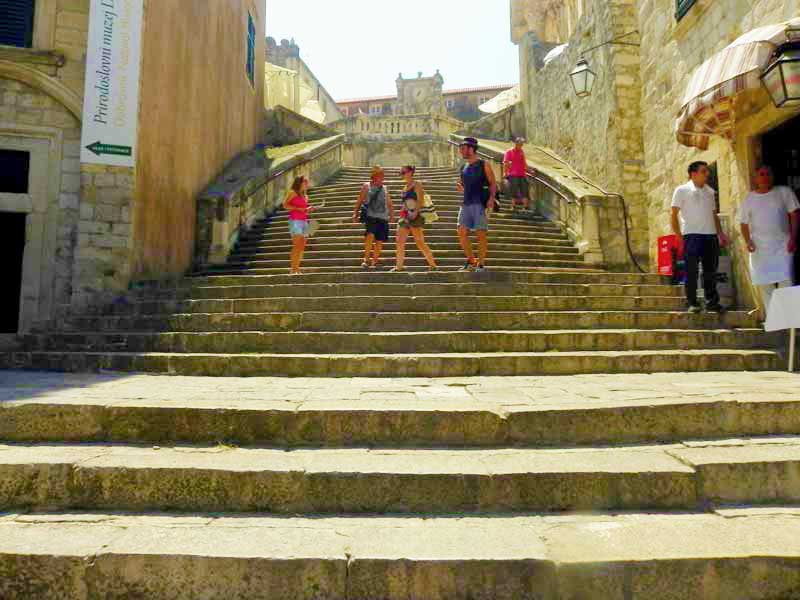
Walk of Shame Stairs in Dubrovnik
Photo © IQCruising
Game of Thrones - Dubrovnik is the setting for the city of King's Landing in the HBO series. Daenerys Targaryen is filmed in locations like the St. Dominic Street, Lokrum Island, The Knežev Dvor and Sponza palaces, Lovrijenac (Fort of St. Lawrence), and Fort Bokar and the Minčeta tower.


